“Check out our new 30-day detox!”
“Sign up for the 90-day paleo challenge!”
“Get ready for bikini weather with our 45-day beach booty diet!”
"Eating right" is about so much more than just avoiding processed foods and cutting back on sugar. A healthy diet means many things: eating the right balance of macronutrients, getting plenty of micronutrients, eating the right number of calories, even eating at the right time of day. According to a new study, the time of day you eat may be a lot more important than you'd think.
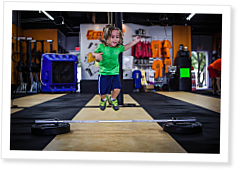
A recent paper in the Journal of Bone and Mineral Research found that increased bone mineral content (BMC) and bone mineral density (BMD) in childhood are positively associated with time spent doing high-impact physical activities (PA), even for those with a genetic risk of low bone mass in adulthood (1).
A concern over BMC and BMD generally arises in those over 60 years old, when low bone mass and osteoporosis can occur. However, the time of maximal bone mineral accretion occurs as puberty begins reaching a maximal rate in females at 12.5 and males at 14.1 years old (2). This period also corresponds to a time of maximal height velocity (2). Therefore, actions that can affect this process during this window of opportunity are important to consider; indeed, “the magnitude of peak bone mass attained in young adulthood is an important predictor of osteoporosis later in life” (2).
The National Osteoporosis Foundation published a position statement in 2015 listing the factors that can influence peak bone-mass development throughout life (2). The most direct is an individual's genes, explaining 60-80 percent of the measured differences (2). The remaining 20-40 percent include factors such as macronutrients, micronutrients, unhealthy habits (smoking, drinking, etc.) and PA (2). Despite years of research, the foundation concluded that only PA and calcium have a “strong” body of evidence behind their relationship with skeletal health; vitamin D is listed as “moderate” (2).
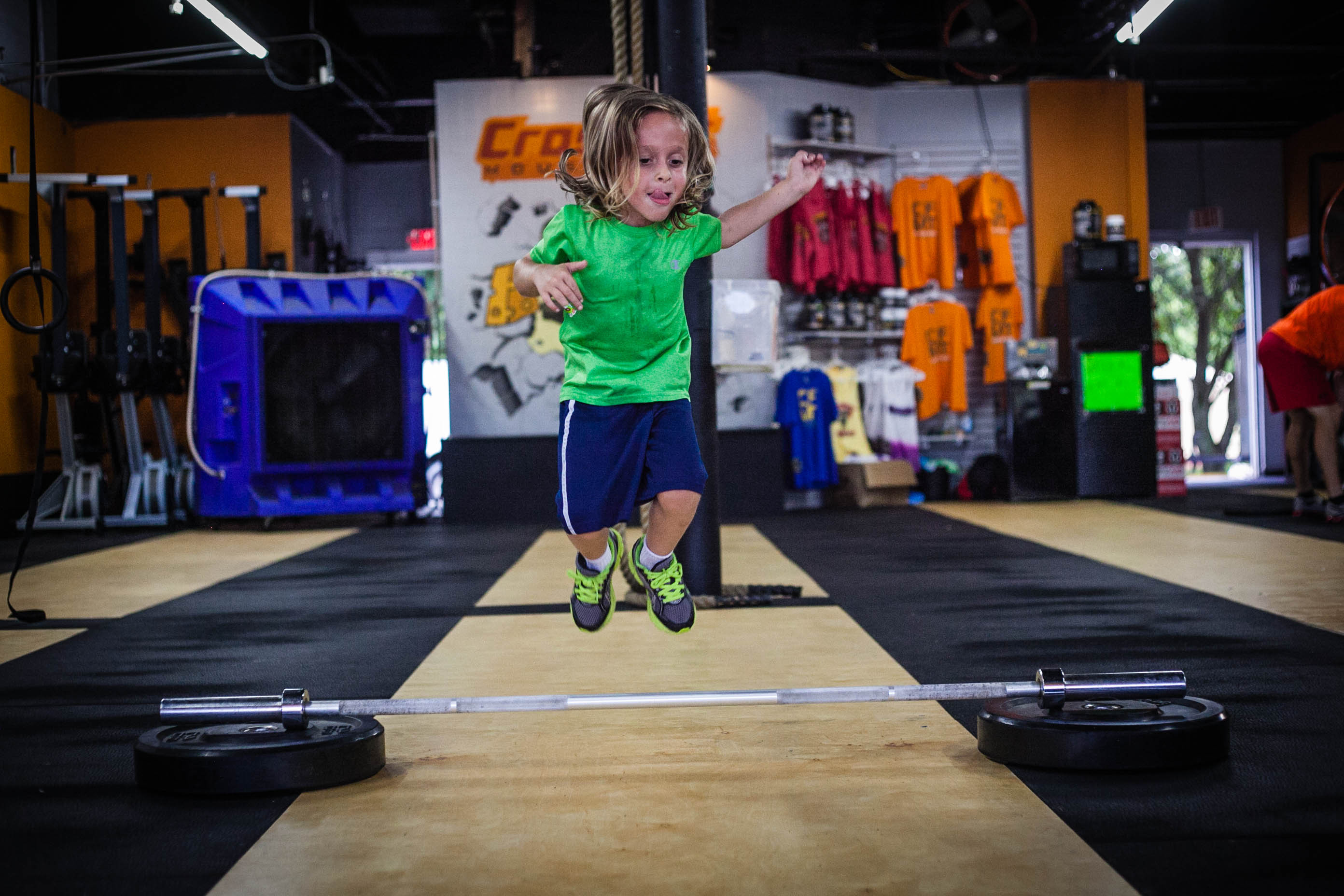
Mitchell et al. (1) investigated the relationship between PA and BMC as well as BMD in children from 5 to 19 years old. As many as 918 individuals were tracked for up to six years, responding to PA questionnaires and undergoing dual-energy X-ray absorptiometry (DXA) scans (1). Total PA time was positively associated with higher scores for BMC and BMD (1). In fact, the association was driven solely by time spent doing high-impact PA; low-impact PA showed no statistically significant relationships with skeletal health (1).
The questionnaires stated that low-impact PA included such activities as biking, bowling, climbing stairs, cross-country skiing, downhill skiing, gardening, golfing, hiking, hockey, kayaking, inline skating, rowing, sit-ups, skating, snowboarding, surfing, swimming, walking, waterskiing and yoga (1). Examples of high-impact PA were listed as aerobics/dancing, basketball, baseball, football, gymnastics, jogging/running, jump rope, lacrosse, martial arts, soccer, softball, squash, tennis, volleyball and weightlifting (1).
Additionally, the positive associations with high-impact PA remained even in children with below-average BMC and BMD scores (1). Below-average scores might suggest an underlying genetic risk, and it would be noteworthy that PA associations remained. In order to assess this question directly, DNA from the participants was analyzed and given a genetic risk score. Each sample was screened for 67 genetic variants (single nucleotide polymorphisms) that have been associated with bone-mass differences in adults (none of the genes involved in the disorder osteogenesis imperfect were examined); the more variants detected, the higher the genetic risk score. The association of BMC and BMD with high-impact PA held regardless of the genetic risk score (1). Even if an individual has a genetic predisposition for lower bone mass as an adult, high-impact PA can still provide a benefit.
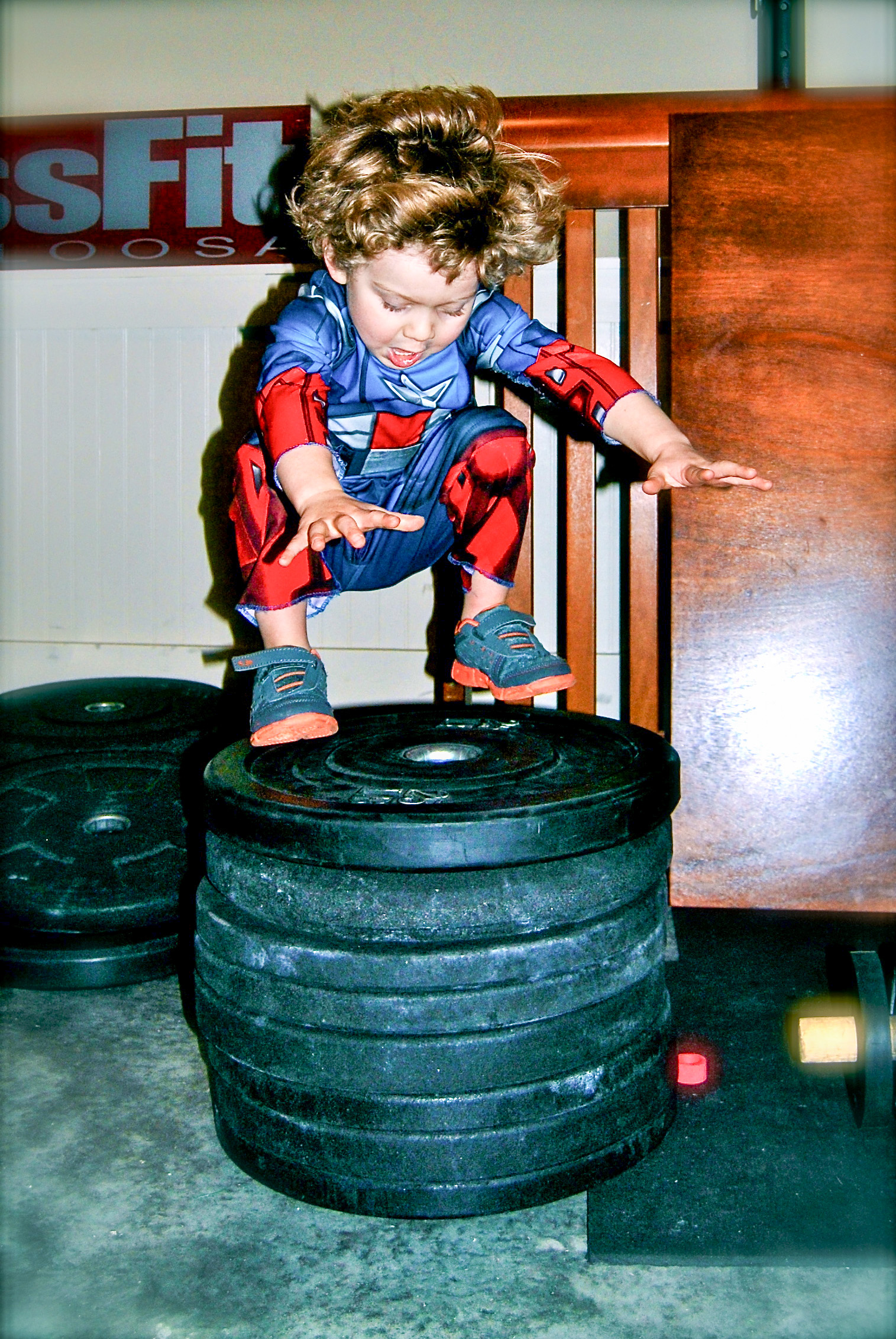
Increasing time spent doing high-impact PA as a youth is a simple and direct way to improve skeletal health. As further evidence, Ishikawa et al. (3) state in their meta-analysis, “Our findings support previous research highlighting the advantage of performing high-impact, weight-bearing activity on bone mineral accrual during prepubescence and imply that even non-competitive levels of weight-bearing exercise can exert a positive influence on the bone health of young girls.”
The ease of implementing these types of exercises is highlighted in a study from Queensland, Australia, by Weeks et al. (4). Eighty-one adolescents in the intervention group had an added “10 min of directed jumping activity at the beginning of every physical education (PE) class, that is, twice per week for 8 mo, excluding holidays” (4). Jumping activities included jumps, hops, tuck jumps, jump squats, etc. Improved bone mass was observed for both genders compared to controls who only participated in regular PE (4).
One of the programming directives offered at the CrossFit Specialty Course: Kids is including impact-loading exercises on a daily basis. This simple addition results in meaningful and significant benefits not only in terms of the improved fitness it generates through these plyometric exercises but also with respect to increased skeletal health in the long term.
References
1. Mitchell JA et al. Physical activity benefits the skeleton of children genetically predisposed to lower bone density in adulthood. Journal of Bone and Mineral Research 31(8): 1504-12, 2016.
2. Weaver CM et al. The National Osteoporosis Foundation's position statement on peak bone mass development and lifestyle factors: A systematic review and implementation recommendations. Osteoporosis International 27(4): 1281-1386, 2016.
3. Ishikawa S, Kim Y, Kang M and Morgan DW. Effects of weight-bearing exercise on bone health in girls: A meta-analysis. Sports Medicine 43(9): 875-92, 2013.
4. Weeks BK, Young CM and Beck BR. Eight months of regular in-school jumping improves indices of bone strength in adolescent boys and girls: The POWER PE study. Journal of Bone and Mineral Research 23(7): 1002-11, 2008.
About the Author: Jon Gary received a doctorate in molecular biology from UCLA. He is a CrossFit Level 3 Trainer and a staff member for the CrossFit Specialty Course: Kids. He's been doing CrossFit since 2003. He lives in San Diego, California, with his wife and coaches teenagers at CrossFit Escudo.
Photo credits (in order): Joe Vaughn/CrossFit MouseTrap, Brittany Shamblin
The CDC estimates that over 29 million Americans live with diabetes, and an additional 86 million are living with prediabetes (higher than normal blood sugar, but not enough for a diabetes diagnosis). In 2013, diabetes was the 7th most common cause of American deaths, and is the primary cause of adult-onset blindness, lower limb amputations, and kidney failure.
Diet sodas have been the subject of hundreds of studies in the last decade. The majority of those studies have found that diet soda is unhealthy, due to the artificial sweeteners it contains. For example, a 2009 study discovered that daily consumption of diet soda increased metabolic syndrome risk by 36%, and type 2 diabetes risk by 67%. Staggering numbers-and a reminder of the danger of diet soda.
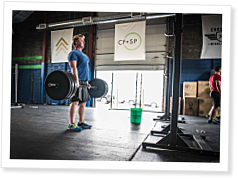
Thirty days after a stem-cell transplant, Timmon Lund joined CrossFit St. Paul.
“I wanted to get healthy again.”
Nine months earlier, at 33, Lund had been diagnosed with Hodgkin's lymphoma. The cancer limits the body's ability to fight infection as it progresses. Chemotherapy and radiation are common treatments; stem-cell transplants are not.
CrossFit, he said, was a way to get back in shape.
But Lund only made it through the third week of the Minnesota affiliate's month-long on-ramp program before he noticed a constriction in his neck whenever he so much as put a PVC pipe overhead. For nearly a week, his head would get swollen and he would feel dizzy. It was August 2013.
“When I relapsed, I knew it (before I saw the doctor) because I felt it.”
At that point, Lund had already endured two chemotherapy treatments-one in December 2012, the other in March 2013-before being approved for the autologous stem-cell transplant, requiring stem cells from his own body.
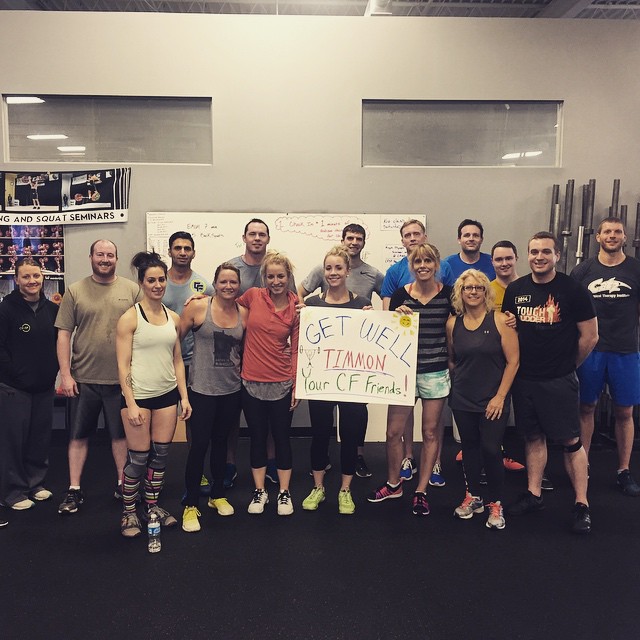
That constriction in his neck turned out to be a new tumor squeezing his windpipe and blood vessels. Lund began chemotherapy treatment for a third time. Doctors hoped for positive results so the former railroad supervisor could be approved for an allogeneic stem-cell transplant, requiring stem cells from a matching donor.
Treatment was every other Friday. Immediately after each session, Lund went straight to the box for a “little piece of normal.”
He said: “I threw up a lot in class.”
Still, he was gaining strength.
“My doctors could see improvements.”
The treatment worked. At first. Then it didn't. One of his oncologists, Dr. Hengbing Wang, layered on a second chemotherapy treatment called bendamustine, a nitrogen mustard.
“They were throwing whatever they could at the wall,” Lund explained.
He added: “But it actually worked.”
The tumors were gone. Lund was still working out. And he qualified for the transplant, which would require a 30-day hospital stay. During that time, Jesse Quinn, one of CrossFit St. Paul's coaches, stopped by to work out with Lund. Doctors discharged Lund two weeks early because he was recovering so well.
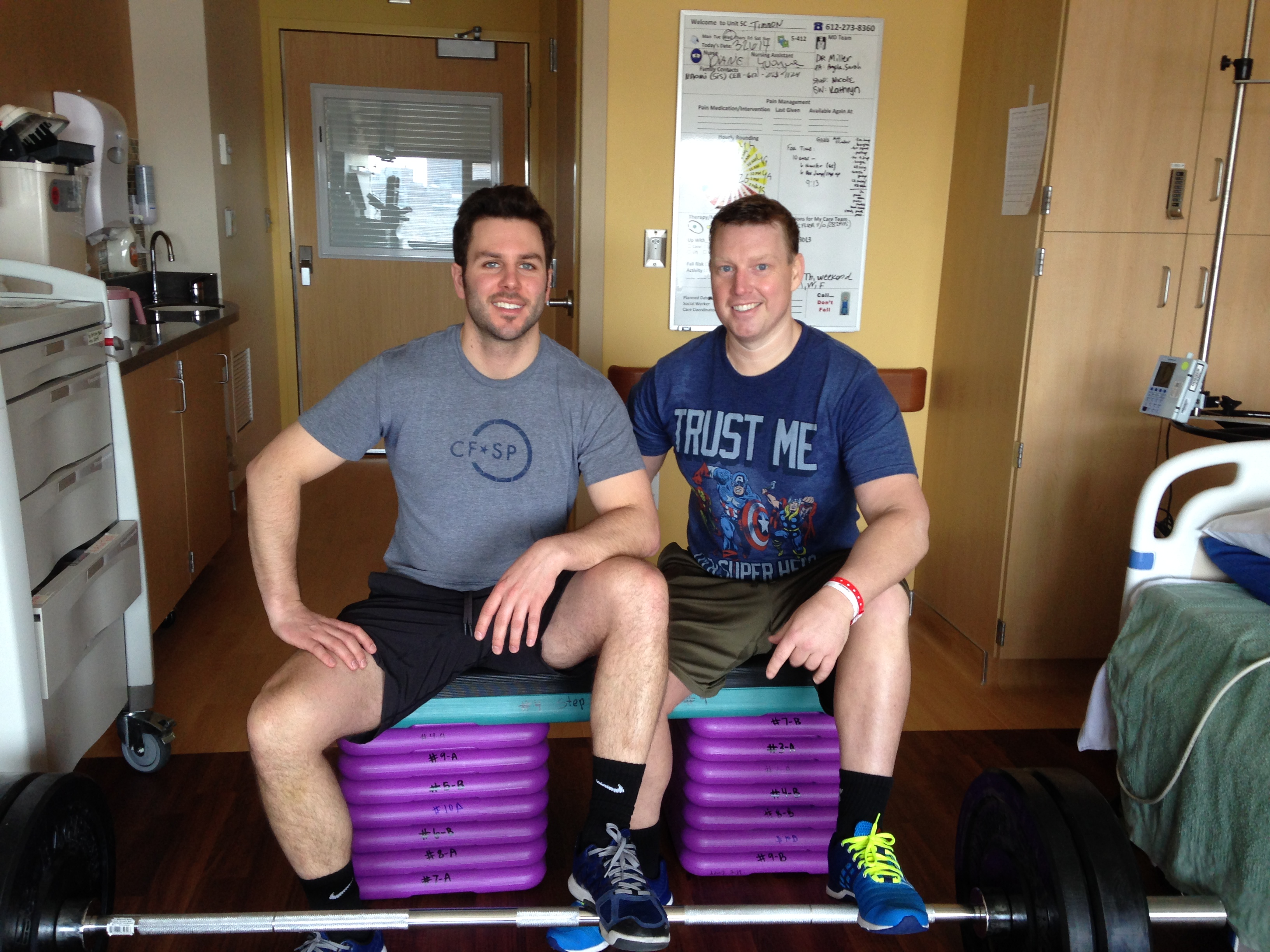 Coach Jesse Quinn (left) stopped by the hospital to work out with Lund.
Coach Jesse Quinn (left) stopped by the hospital to work out with Lund.
Nearly 30 days after the second transplant, though, bad news came once again. A PET scan found more tumors. Lund had to undergo 25 rounds of radiation.
“That was probably the worst of all the different rounds of chemo I did,” he said. “I didn't have a good response to that either.”
Recurring pneumonia made for multiple hospital stays.
Doctors worked to get Lund into clinical trials, racking their brains for anything that might work.
By late summer 2014, Lund was back on the bendamustine. It wasn't working. Doctors tried other treatments.
“They were kind of at the end of the rope,” Lund said.
Now it was December. Lund had had a tumor in his liver so large he couldn't sit up for months. All he could do was lie down and take his prescribed narcotics.
“We almost lost him,” Wang said.
The oncologist petitioned for Lund to be included in an experimental immunotherapy treatment for which he had been previously denied. He would be among the first people to ever try it. He was approved.
On Dec. 19, 2014, days after beginning the therapy, Lund was able to sit up on the couch for a couple of minutes. It was the first time he was able to do that in months.
About two months later, doctors suspended the treatment because they were concerned over Lund's lung toxicity. Lund hasn't needed treatment since. He had been on round-the-clock oxygen for roughly half a year and was eventually able to wean off it. He was back at CrossFit by fall 2015.
“I'm the weakest, the slowest, the last for everything, and I have no problem with that. I'm smilin' as I tell you that,” Lund said. “I'm back at it and I love it.”
When he first showed up at CrossFit St. Paul, all he wanted was to improve his fitness.
“In hindsight-I'm not saying that CrossFit cured my cancer or anything like that-but I know in my heart that it kept me healthy enough to keep me alive to get that medicine.”
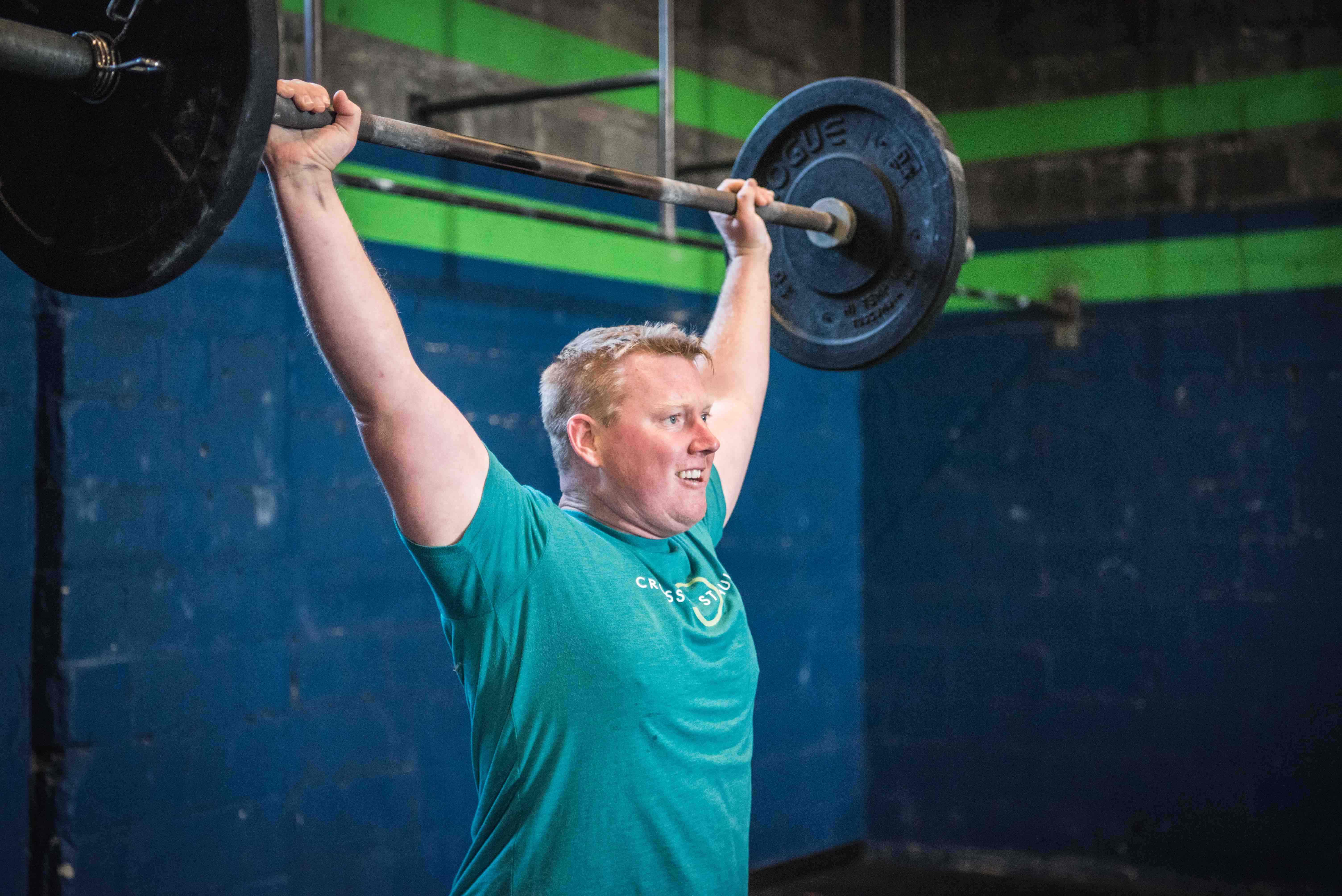 Lund believes his fitness kept him healthy enough to fight.
Lund believes his fitness kept him healthy enough to fight.
Lund continued: “That's one of the reasons why, as soon as I could, I wanted to get back at it.”
Wang credited Lund's fitness and positive attitude for his ability to endure chemotherapy, radiation and two transplants.
“(They) helped him not only physically but psychologically deal with the disease and deal with the treatment and made the whole thing easier, for sure,” the doctor said.
National cancer guidelines are now recognizing the importance of exercise for cancer patients, Wang added.
Still, Lund's story is special, he said.
“He's considered a miracle.”
About the Author: Andréa Maria Cecil is assistant managing editor and head writer of the CrossFit Journal.
Photo credits (in order): Paul Begich, Courtesy of Timmon Lund, Alex Tubbs
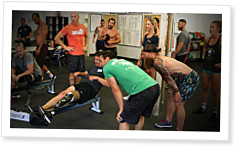
Brian Riley was exposed to CrossFit while serving as a Marine, but an injury overseas forced him to relearn everything. Now he's putting his experiences as an adaptive athlete to good use at CrossFit Del Mar in San Diego, California.
Riley was stationed in Afghanistan when he took a medium-machine-gun round to the lower left leg. The injury resulted in a below-the-knee amputation.
After returning home, he began attending CrossFit Del Mar's free Wednesday classes for Wounded Warriors.
“It was kind of an eye-opening experience ... how much the biomechanics change when you don't have an ankle, and then how much stays the same,” Riley says.
The coaching team at CrossFit Del Mar soon realized that Riley had much to contribute to the community. They sent him to a Level 1 Certificate Course. He became a Level 2 Trainer soon after.
Now he's using what he's learned about himself to help other adaptive athletes discover what they're capable of.
Video by Eric Maciel.
4min 33sec
Additional reading: “Warriors on the Waves” by Andréa Maria Cecil, Dave Re and Naveen Hattis, published April 19, 2014.
Whenever we get a new athlete into our program, the first task is to perform a diagnosis of the athlete's assets and liabilities for the performance of the snatch and clean & jerk. Whether the diagnosis is performed by me or one of my assistants or interns, we write down the results in Evernote. We don't often refer back to these notes, but the process causes us to focus on determining the most immediate problems that we have to address. Very few of our athletes are what would be called “naturals”.

Welcome to weird.
That's how Santa Cruz, California, is known.
For more than a decade, the sleepy Northern California beach town of 63,000 has used the same branding campaign to encompass its idiosyncrasies: “Keep Santa Cruz Weird.”
The city is a mere 30 miles south of Silicon Valley, home to the likes of Apple, eBay, Facebook, Google, Intel, Netflix and Tesla. But it couldn't be more different.
As the San Jose Mercury-News once described, Santa Cruz's branding “seems like a diagnosis more than anything else.”
Hippies, drum circles, a man walking around town in pink women's clothing-it's weird, all right. But Santa Cruz is more than its eccentricity. It teems with life: from outdoor activities among the towering Redwoods, along perfectly carved cliffs and on the Pacific Ocean's pristine beaches to homegrown eateries offering fresh, local fare.
Plus, it offers CrossFit athletes something other cities can't: insight into the methodology's history.
To read the entire article, click here.
A recent study, published by the Journal of the American College of Nutrition, was conducted to better understand the connection between production of estrogen and the consumption of soy and whey protein when training for muscle strength and size.
“It doesn't matter how beautiful your theory is, it doesn't matter how smart you are. If it doesn't agree with experiment, it's wrong.”
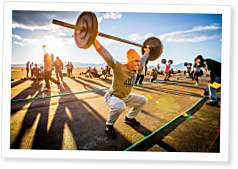
If you determine the size of the field before programming the events, you might be putting the collars on before the plates.
“I've got 100 athletes, 10 solid judges, 5,000 square feet and nine hours to run as many events as I can.”
How many organizers have said something like that when planning a fitness competition?
I'd suggest what they've really got is a programming nightmare.
Local Limits
One of the best parts of the CrossFit Games is that organizers have the freedom to do just about anything they want. Within reason, Dave Castro and the Games team are free from concerns about space, judges, equipment, scheduling and other issues that are front and center when programming a competition at the affiliate level. The Games certainly have some limits, but the boundaries are hazy fences near the horizon and leave a lot of room for creativity when finding the Fittest on Earth.
On the other hand, local fitness competitions are often hamstrung by a host of factors, though some larger multi-day events are less encumbered. Of course, the mandate of these events is not to find the fittest athlete on Earth; that's the job of the CrossFit Games alone. But these local throwdowns are often intended to find the fittest person who competes, yet their format won't actually allow them to do so.
A question: How many people have programmed a competition and chosen a max snatch over a max clean and jerk simply because less plates are involved?
Another question: How many competitions feature four or five events all in the same short time domain simply because longer events eat up too much of the day?
A final question: How many competition organizers ask “how can I accommodate the most athletes?” as opposed to “how many athletes can I accommodate while still finding the fittest person?”
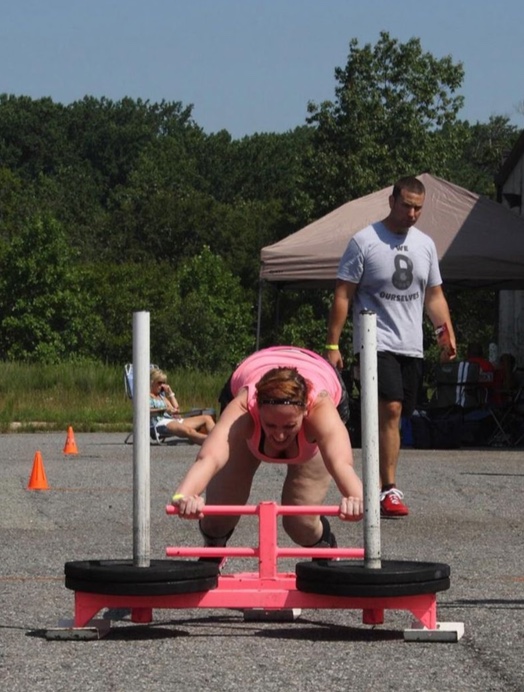 Got gear? If you only have two sleds, you can only run two heats at a time.
Got gear? If you only have two sleds, you can only run two heats at a time.
The All-Too-Common Scenario
Consider this: 100 athletes in a one-day competition starting at 8 a.m. Ignore for the moment space, judge, volunteer and equipment concerns.
If each heat of Event 1 takes seven minutes plus three minutes of transition time, you can run six heats an hour. You've got 100 athletes, and you can accommodate a maximum of 10 at a time. That's 10 heats, putting you at 9:40 a.m., plus about 30 minutes of scoring catch-up and set-up/warm-up time for Event 2.
With the seven-minute time domain covered, Event 2, starting at 10:10 a.m., tests endurance-something in the 18-minute range, leaving two minutes between heats so you can run three per hour. That means you've got three hours, 20 minutes of competition if you run 10 athletes per heat. Suddenly it's 1:30 p.m. Skip lunch and add in another 30 minutes for transition, bringing you to 2 p.m.
At this point, let's say you want to test strength with squats. On the verge of rushing, you decide on a very brisk five minutes for each athlete to establish a 5-rep max, which limits the weight you'll need. Ten athletes per heat with a minute between heats gives you 10 in an hour, driving the end of Event 3 somewhere near 3 p.m., with the next event starting at 3:30.
This is where things can get weird. Organizers often seek to avoid running into the evening by cutting the field substantially or serving all athletes a second event in the seven-to-10-minute time domain. The former approach usually creates scoring issues, and the latter often produces a redundant event that will still take the competition past 5 p.m.
You can, of course, start earlier or run later, but after nine to 10 hours spent in the gym, it's usually time to hand out some prizes and set the competitors loose on the kind of post-event cheat meals that demand total coverage on Facebook and Instagram.
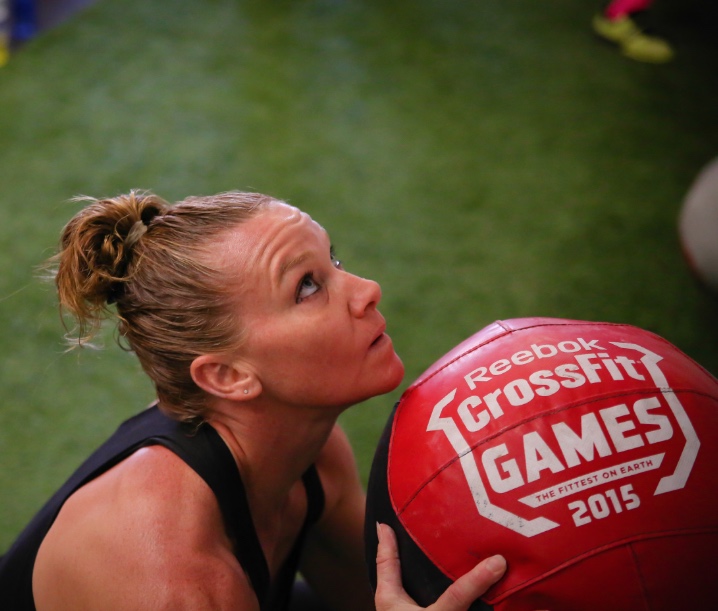 While resources are plentiful and don't limit programming at the CrossFit Games, a simple shortage of medicine balls can force programmers to change events at the local level.
While resources are plentiful and don't limit programming at the CrossFit Games, a simple shortage of medicine balls can force programmers to change events at the local level.
Reverse-Engineering Your Competition
Recall that in the above scenario we only considered time and assumed you had enough space and equipment, lots of great judges, and an army of volunteers who need only coffee and not lunch. We also ignored the need for scaling between divisions, weather concerns, crowd management and all the other issues that come up when trying to run a great competition.
You could try to solve the scheduling problem by adding a second day of competition or starting earlier and running later. But those solutions come with obvious drawbacks: A second day will eat up an entire weekend and a very long day is hard on both competitors and event staff.
To make the event work, organizers often commit a critical error by foregoing real tests of fitness in favor of crowd control in a gym that looks like a high-density cattle farm. “Work capacity over broad time and modal domains” becomes “work capacity over short time domains involving modalities dictated by space and equipment concerns”-far from ideal if you're trying to determine the fittest person in the competition.
That's not to criticize local competitions but rather to point out some inherent limitations and offer a possible solution.
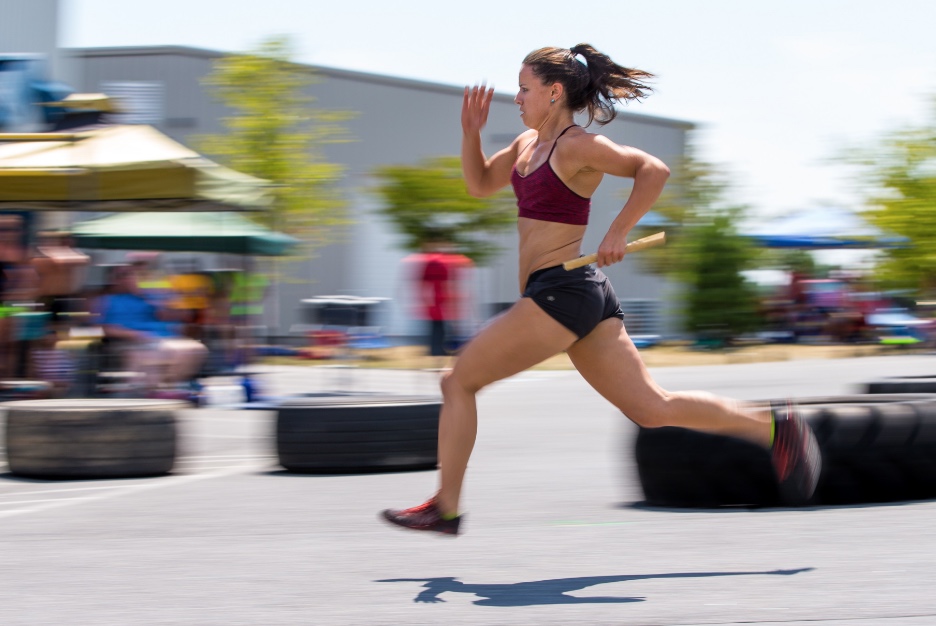 Running is a great test of fitness, but planning a route for competitors can be very tricky.
Running is a great test of fitness, but planning a route for competitors can be very tricky.
All too often, I think competitions are set up to accommodate too many athletes, which is noble but ultimately impractical. In other cases, the number of athletes is determined by a desire to hit a certain profit margin: athletes x registration fee - costs = profit.
In either case, I think you're setting yourself up for failure. I'd rather see a two-event competition that features just Cindy and Grace instead of a five-event competition in which the same person wins all events simply because they're all relatively light and about five minutes long.
Here's my recommendation: In the very early stages of planning a competition, program the events so they accomplish your goal. If that goal is finding the fittest-and I think it should be-then you have to measure work capacity across broad time and modal domains. You need to test strength, power, endurance, skill and more with various implements and movements in events that run from very short (think Fran) to relatively long (think Cindy or longer).
Keeping your goal in mind, program the best events you can while holding space, time, equipment and volunteer concerns in check for a moment. They'll play a role in your planning, but they shouldn't be the overriding concern at the outset. The main goal is creating a well-programmed event that tests overall fitness in one day-your “perfect competition.”
Once you've got what you believe to be a solid test of fitness, do the math on time, equipment and space and determine how many athletes you can reasonably accommodate. From there, figure out what you want to gross, divide by the athletes you can accommodate and set the price for entry. Remember: People will pay more for things that are better, and a great competition should cost more than a poorly planned event.
If the entry fees your calculations dictate are well above market value and turn athletes away, you might consider adjusting a too-aggressive profit margin and lowering the prices slightly so they create value for the competitor. I suspect many gyms use their own space and equipment and enjoy a lot of volunteer support, which keeps overhead low and sets up a high-margin windfall. It's easy to get greedy in that situation and add in 10 more competitors when you should actually remove 10 spots to preserve the intent of the competition.
If you can float the boat with a reasonable entry fee, go forth and run the best fitness competition ever seen in your area-the kind of event that justifies its price and lures competitors back again next year.
If you can't make the financial nut and feel tempted to mess with the workouts to accommodate more athletes, explore other options. Can you find more space or equipment somewhere? Is it feasible to add another day? And so on.
But don't touch the programming. That should be off limits.
If you waver and start to feel like a rainbow sea of Nanos will trample your well-considered workouts into five five-minute burners that don't actually test overall fitness, think long and hard about whether it's worth running the “fitness competition” in the first place.
About the Author: Mike Warkentin is the managing editor of the CrossFit Journal and the founder of CrossFit 204.
Photo credits (in order): Matthew Tanner, Michael Frazier, Tai Randall

Why your doctor only wants to see you after something has gone wrong.
Dr. Stephen Schimpff calls it the paradox of American medicine.
“We have really well-trained, well-educated providers. We are the world's envy for biomedical research. We've got excellent pharmaceutical (and) biotechnology companies and diagnostics (tools). But the paradox is on the other hand we have a terribly dysfunctional health-care delivery system,” said the retired CEO of the University of Maryland Medical Center in Baltimore.
Despite our technology, education and wealth-in 2014, total national health-care expenditures hit US$3 trillion-chronic disease remains the nation's top killer, with seven of the top 10 causes of death in 2010 stemming from chronic illnesses such as heart disease, stroke, cancer, Type 2 diabetes and obesity. In 2010, 86 percent of all health-care spending was attributed to chronic disease-conditions labeled preventable by the Centers for Disease Control.
So why are we still so sick?
“America does not have a healthcare system; we have a 'disease industry,'” Schimpff wrote in a 2010 article. “We focus on disease and pestilence and do a good job of caring for those with acute illnesses and trauma. But we certainly do not address health well and we are not good at caring for chronic illnesses.”
It's an industry based on one fundamental problem, Schimpff said.
“We don't put our money where we could have a huge impact, which would be prevention and wellness.”
To read the entire article, click here.
Athletes who abide by an animal-free ethos have a unique challenge when it comes to getting enough protein into their meals. The most abundant sources of protein in nature are animal based. Vegan and vegetarian athletes who do not get enough protein have a higher risk of experiencing muscle loss rather than muscle gain.
Athletes are perpetually looking for an edge, something to give them a competitive advantage in their race, sports game, or competitive event. Performance-enhancing supplements of all types exist, from legal to illegal and everything in between.
Recent evidence suggests that elite athletes tend to have faster, more efficient brains than non-athletes. Frontiers in Psychology published the results of the study, which was designed to investigate a potential relationship between athletic excellence and higher cognitive and perceptual skills.
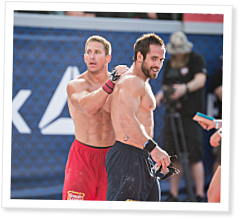
Hilary Achauer investigates the science of sweat and busts the myth that fitness alone determines liquid loss.
At the end of your next CrossFit class, look around.
You'll see some people soaked in sweat, a telltale puddle under the bar. Others who just completed the same workout in the same environment are almost completely dry.
Everyone sweats, but why do some people sweat so much more than others? Do heavy sweaters need to hydrate more than those who merely glisten?
We tend to associate perspiration with fitness, and it's not entirely wrong to do so. Exert yourself for an extended period of time, and it's likely you'll sweat. From the 1980s through 2014, a number of studies showed fit people sweat sooner and more than their sedentary counterparts.
Recently, scientists have taken a closer look at these studies and discovered although exercise and sweat are correlated, improv- ing your fitness will not make you sweat sooner, more efficiently or in greater quantities. And for heavy, salty sweaters, flooding the body with liquid, including sports drinks, is not the best way to replace lost electrolytes.
According to a recent study published by the Journal of Applied Physiology, consumption of a blend of soy and dairy proteins after resistance exercise is advantageous for building muscle mass.
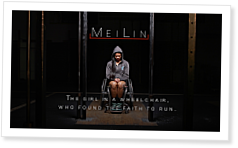
MeiLin McDonald, 17, suffered a severe concussion during a basketball game as a child.
The injury caused her eyes to become permanently dilated and left her unable to focus. McDonald's physician suggested surgery to explore the possibility of inner-ear damage. Unfortunately, complications during surgery made her symptoms much worse and left her unable to walk.
When she came to CrossFit Wilsonville, McDonald was in a wheelchair. The coaches were in awe of McDonald's story and were ready to begin helping her on the journey to recovery.
The first task was simply to walk 8 feet. Once McDonald mastered that, the goal was to do it faster.
Now, McDonald has new goals: “I would love to do a triathlon,” she says.
She has some advice for anyone dealing with a debilitating injury:
“There's always hope. Keep fighting. It may suck, but as soon as you say you're done, everything ends and you don't get to see the impact you have on people.”
Video by Jesse Kahle, Sevan Matossian and Tyson Oldroyd.
7min 20sec
Google's smartwatch operating system, Android Wear, is making its way into the fitness smartwatch market.
The Polar M600 is the first enthusiast device that uses Google's operating system to turn the watch into much more than just a fitness tracker. Is the M600 ready for prime time?
Dumbbells are still one of the best tools for strength development. They may not have the mystery of kettlebells or the perception of power that comes with barbells and bumpers, but they can make you strong in so many ways. Like all exercise tools, dumbbells come in all shapes and sizes with a wide range of quality and pricing. We decided to give the CAP PVC coated hex dumbbells a test because, frankly, they seem practical and they look good.
Some of the most common questions coaches get from trainees are in regards to Delayed Onset Muscle Soreness (DOMS), the muscle pain you get following a workout. Of particular interest is how to make it more tolerable. A recent study1 in the Journal of Strength and Conditioning Research looked at whether or not caffeine could help keep DOMS under control.
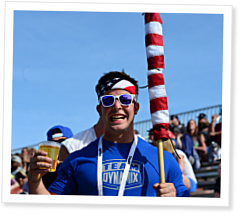
A look at the effect of moderate alcohol consumption on fitness and health.
A few years ago I stopped drinking alcohol Sunday through Thursday.
I've never been a heavy drinker, so it wasn't a difficult transition. For me, two drinks is letting loose and three is really getting wild, but a few nights a week I'd have a beer or glass of wine while making dinner. Once I started CrossFit, I wondered about the impact of those five or six drinks per week on my health and performance in the gym.
CrossFit was hard enough, I figured, so why make it even more difficult by adding alcohol to the mix? I was so careful about every aspect of my diet, and I worried alcohol was sabotaging those efforts. So I ditched the alcohol in favor of sparkling water and kombucha and saved the drinks for Friday and Saturday nights.
It turns out my years of partial abstinence may have been pointless. More and more studies suggest moderate alcohol consumption can improve cardiovascular health, and recent research suggests a few drinks have no negative impact on athletic performance. Still, alcohol has significant effects on the body, especially when consumed in excess.
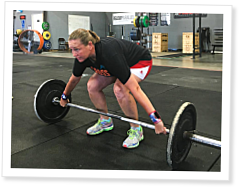
Doctors tell a Houston police sergeant her fitness allowed her to endure invasive surgery to remove a rare tumor that threatened to kill her.
Kristi Barnes typed the words into Google: “transsectional abdominal incision.”
It was about two weeks before her scheduled surgery to remove a tumor that had overtaken her right adrenal gland.
“They were like, 'We'll just cut you open and take it out,'” the 44-year-old recounted. “I didn't realize they were going to have to take out my rib cage.”
Barnes' first thought: “Recovery is going to take longer than I anticipated.”
The Houston, Texas, police sergeant was actually eager for the surgery, which happened in August 2014. She likened her feelings to a child's yearning for Christmas morning.
“I was ready,” Barnes said. “My life was on hold. I wasn't on the streets at work, so my officers didn't have me there. I couldn't go work out. I couldn't go to the box-and that was my second family. Everything was just in a holding pattern. I just hit pause on my life. And I needed it to get going again.”
Cardiac Arrest
In July 2014, Barnes needed a hysterectomy. The surgery would be vaginal.
“It was supposed to be very simple,” she said.
A hysterectomy is the second-most-common surgery among U.S. women, according to the Office on Women's Health that is part of the U.S. Department of Health and Human Services.
In the preceding months Barnes kept her normal schedule, which included working out at CrossFit Redefined five days a week. Her plan was to be back on the streets of Houston three weeks after the hysterectomy, beating the doctor's estimate of four to eight weeks of healing time.
“No street cop wants to ride a desk that long,” she said.
Plus, Barnes was a former elite soccer player. She had seen her fair share of surgeries: her hips, her ankle, her hand twice.
“I've been under anesthesia lots of times and never had a problem.”
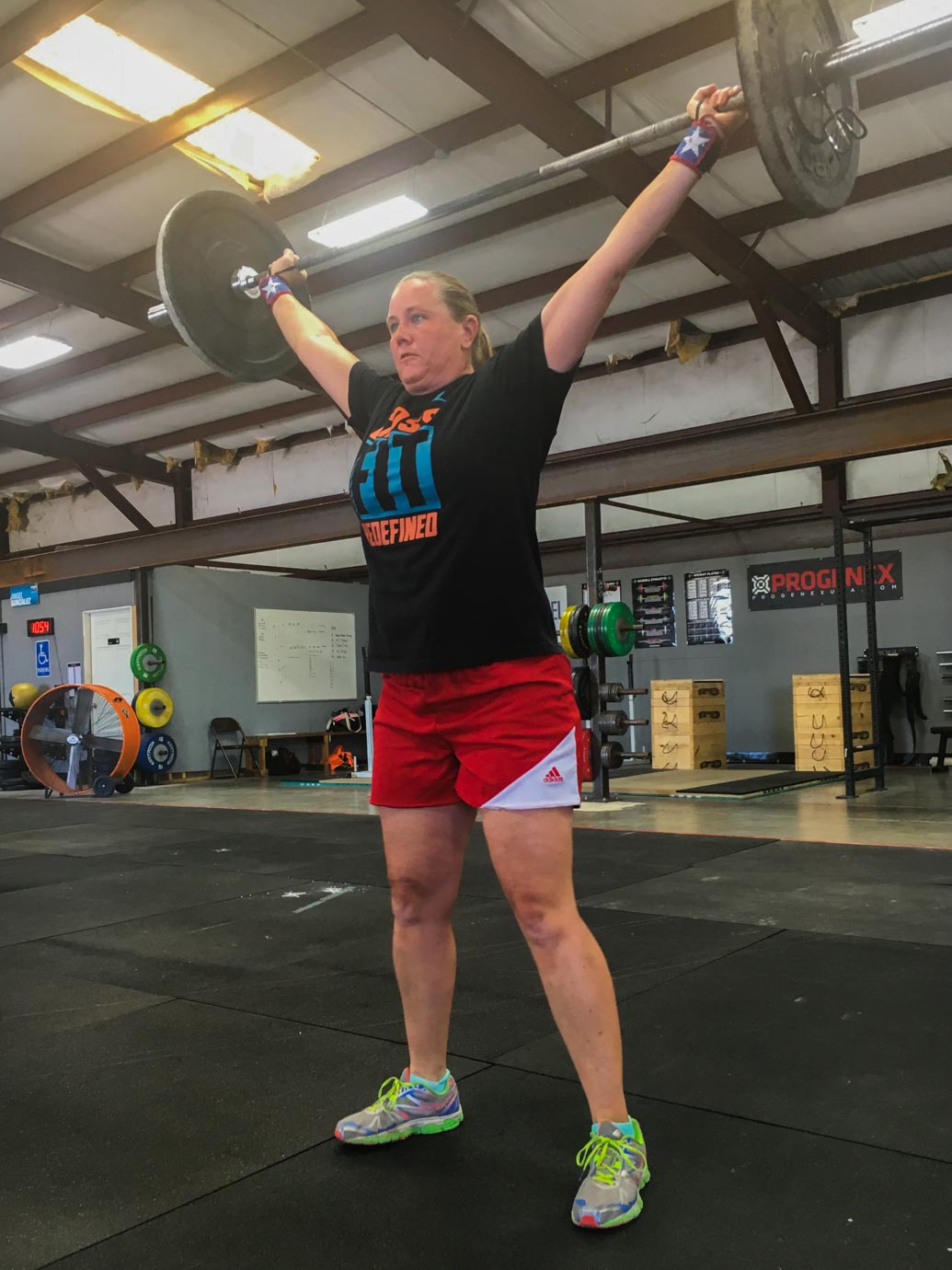 Kristi Barnes: “CrossFit saved my life.”
Kristi Barnes: “CrossFit saved my life.”
She arrived for surgery the fittest she had been in years.
But when she received the anesthetic she went into cardiac arrest. Medical staff performed CPR on Barnes for about six minutes. Once they got her heart restarted, they put her on a ventilator. She was sedated for two days.
“My lungs kept filling with fluids and they had no idea why. My parents were told to prepare for the worst.”
Hospital staff asked Barnes' friends and family endless questions about her eating and drinking habits, whether she used drugs, vitamins or supplements. But the lifelong police officer didn't so much as drink coffee or tea. Barnes underwent multiple scans and tests, including a cardiac catheterization that found her heart to be as healthy as that of an 18-year-old. Doctors decided she must have had an allergic reaction to the anesthesia.
Before the hospital discharged Barnes, she had a chest X-ray to ensure fluid was no longer in her lungs. The routine X-ray was anything but. It captured the top of her right kidney and adrenal gland, where the radiologist saw something unusual.
Lab results showed abnormal levels of normetanephrine, a metabolite of norepinephrine. Norepinephrine is a neurotransmitter that can cause blood vessels to constrict, blood pressure to rise and bronchi to dilate. Barnes reported occasionally waking in the middle of the night “pouring sweat” and with “head pounding.” Thirty seconds later, she would be fine.
“I always thought, 'I'm a cop. I'm dreaming about cop things'-shootings and things.”
Sudden onset of headaches, sweating and an abnormally rapid heart rate are all symptoms of a pheochromocytoma, a rare tumor that commonly develops in an adrenal gland, said Dr. Sofia Vasquez-Solomon, an endocrinologist at Palmetto General Hospital in Hialeah, Florida.
The U.S. has fewer than 20,000 pheochromocytoma cases per year, according to the Mayo Clinic. In patients who have hypertension-more than 3 million per year-about 0.2 percent of them have a pheochromocytoma, Vasquez-Solomon said.
The only treatment is surgery, she noted. Although only 10 percent are malignant, Vasquez-Solomon said, a pheochromocytoma left untreated can lead to potentially deadly results: congestive heart failure, cardiovascular disease, and uncontrolled hypertension that can lead to a heart attack, kidney failure, stroke or a hypertensive crisis.
“It needs to be removed,” she added.
 Barnes' tumor was about three times the size of the average pheochromocytoma.
Barnes' tumor was about three times the size of the average pheochromocytoma.
The average pheochromocytoma is 4 centimeters in diameter-about the size of a golf ball-and surgeons can remove it laparoscopically, Vasquez-Solomon continued. Barnes' tumor, however, was 12 centimeters-about the size of a small coconut.
The surgeon would have to cut her from her right shoulder blade, across her ribs, under her right breast and down to her belly button. He would remove her rib cage, cut out the tumor and then put her back together.
Before he did that, though, the surgeon told Barnes to prepare her will.
A pheochromocytoma reacts poorly to anesthesia, which can lead to complications-such as Barnes' cancelled hysterectomy a month earlier.
“The doctors would only do (the surgery) in the heart-transplant operating room, with a heart/lung bypass machine and transplant team in the room,” she said.
Six weeks after her originally scheduled hysterectomy, Barnes arrived for the surgery that would either save her life or kill her.
She remained unconcerned. The alternative, she said, was worse.
“Everybody made it clear: 'If you don't have this surgery, you're dead.'”
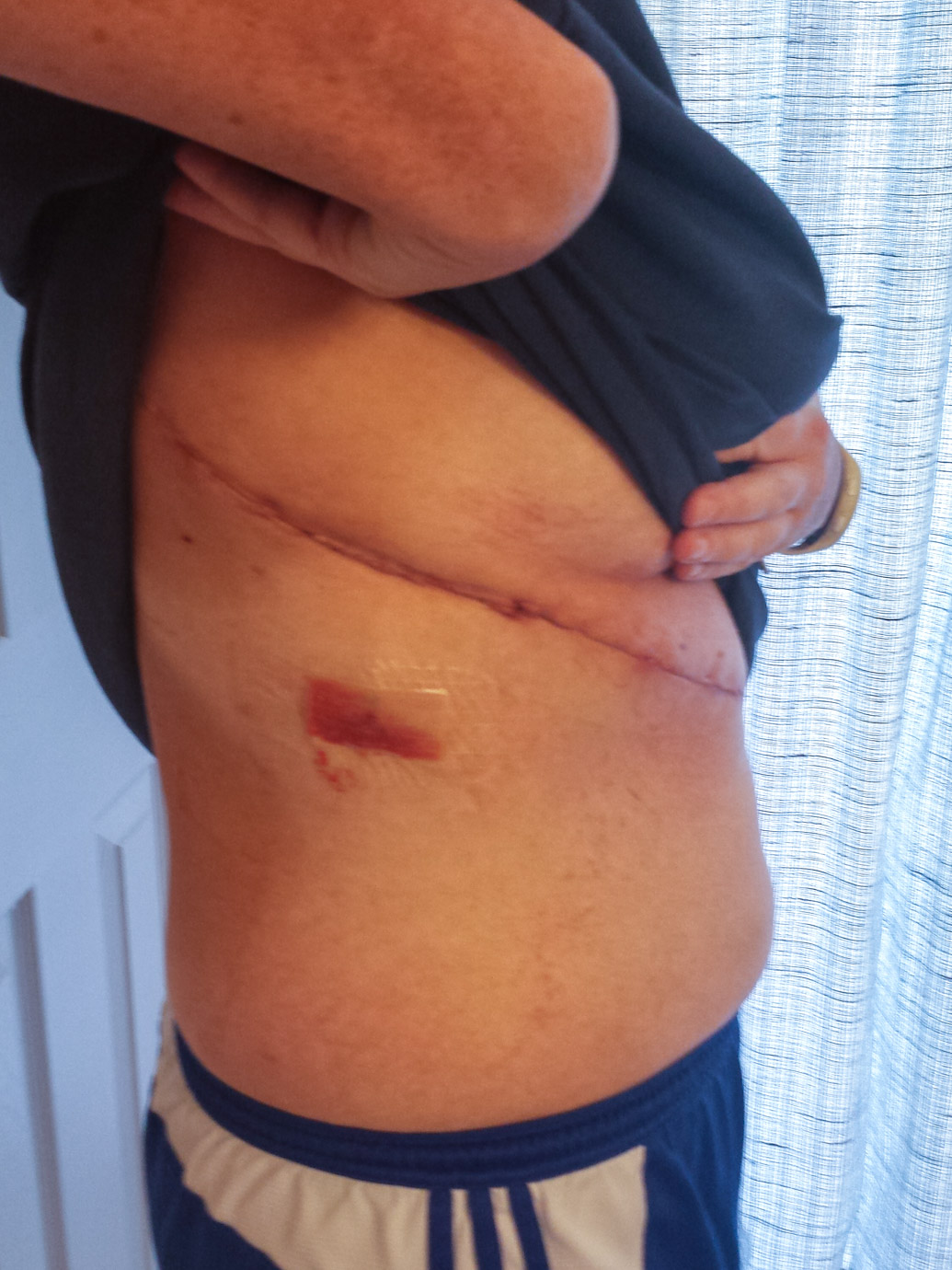 Part of Barnes' rib cage had to be removed to get the tumor out. She recovered fast enough that she was discharged in five days.
Part of Barnes' rib cage had to be removed to get the tumor out. She recovered fast enough that she was discharged in five days.
Recovery-for Time
The next thing Barnes remembered was waking up in the ICU.
First thought: “How long will I be here?”
By the fourth day, she was shaving her legs, moving her right arm and getting out of the bed once an hour to walk, albeit slowly.
“The nurses were mad,” Barnes jokingly told. “They said, 'You were supposed to be in bed and miserable.'”
Doctors told her she'd be in the hospital for two weeks; she was discharged in five days.
More than a year later, Barnes finally had that hysterectomy.
Today she's back to training CrossFit and is functioning at about 90 percent.
“I will say this all day long-that CrossFit saved my life.”
Doctors, including a CrossFitting cardiologist, told Barnes her fitness primed her heart and lungs to handle the load of such an invasive surgery.
“When I look back, I think it all started with CrossFit. Had I not gone to CrossFit, none of this would have played out the way it did.”
About the Author: Andréa Maria Cecil is assistant managing editor and head writer of the CrossFit Journal.
Photos: Courtesy of Kristi Barnes
I'm always on alert for new sleep studies. I find that sleep is a major roadblock in nutrition and fitness. I recently discussed how sleep can change hunger levels, but it can also put us at risk for metabolic, immune, digestive, and memory issues among others.
The principles shared in this video will support your freedom from any strain or pain in the lower back. The simple practices shared are geared to teach you to be aware of how you rotate your thigh bones at their insertion points, the hip sockets. They will also help you begin to notice how you distribute weight on your feet. These two points are often overlooked in relation to the health of our lower back. Yet in my years of teaching, I've seen this awareness help more people with lower back issues than anything else.
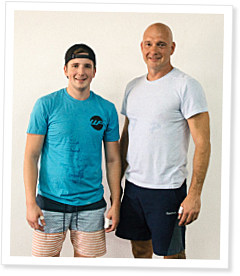
As a teen, Brandon Justice was told a genetic disorder would end his life sometime in his 30s. Because of CrossFit, doctors tell him he can now expect a normal lifespan.
Eighteen-year-old Brandon Justice didn't care about his health or his future.
He did what he saw the average high-school kid doing: He went to parties, ate fast food, didn't exercise.
After all, doctors told him he would only live to be 34.
Why bother caring, he thought.
“I had a mindset of, 'I'm gonna die when I'm gonna die.'”
That's when Justice ended up in the hospital for 21 days. He had double pneumonia from an upper respiratory infection.
When Justice was 3, doctors had diagnosed him with cystic fibrosis, an incurable genetic disorder that clogs the lungs and digestive system with mucus, making it difficult to breathe and digest food.
The three-week period was Justice's third hospital stay. The first two were each a week long for less serious respiratory infections, Justice said.
When doctors discharged Brandon this time, his father had a plan. Throughout Brandon's childhood in Texas, David Justice, a now-retired Austin police officer, had tried everything to get his son to be active: martial arts, swimming, running.
“I tried to encourage him to treat his body as an athlete,” David said.
Nothing stuck.
But the day after the teenager left the hospital, David took him to West Plano CrossFit.
“We're gonna do this,” he told his son.
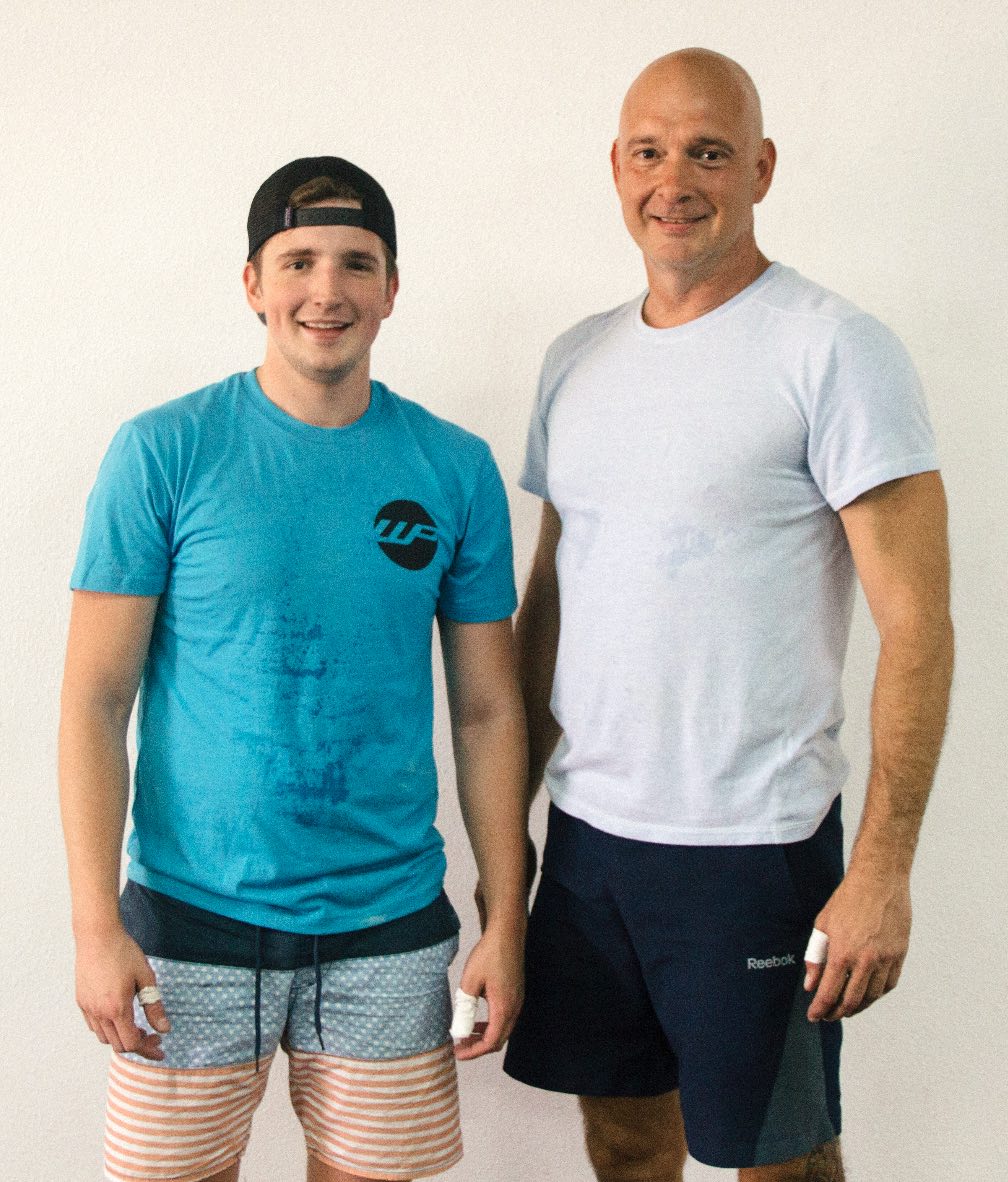 Brandon (left) and his father, David Justice.
Brandon (left) and his father, David Justice.
Their first workout was Fight Gone Bad, requiring 1 minute's worth of work at each of five stations: wall-ball shots, sumo deadlift high pulls, box jumps, push presses and rowing.
“It was complete hell. But it was (hell) in the best way possible,” said Brandon, now 21.
In three years, 5-foot-10 Justice has gone from 135 lb. to 175 lb. and has dramatically improved his lung function. He's shaved roughly 2 minutes from his 1-mile time, now running it in about 7 minutes.
“My doctor (had) pretty much told me I was middle-aged,” Justice said. “Now my doctors (tell) me I'm on pace to live a normal lifespan with what I'm doing.”
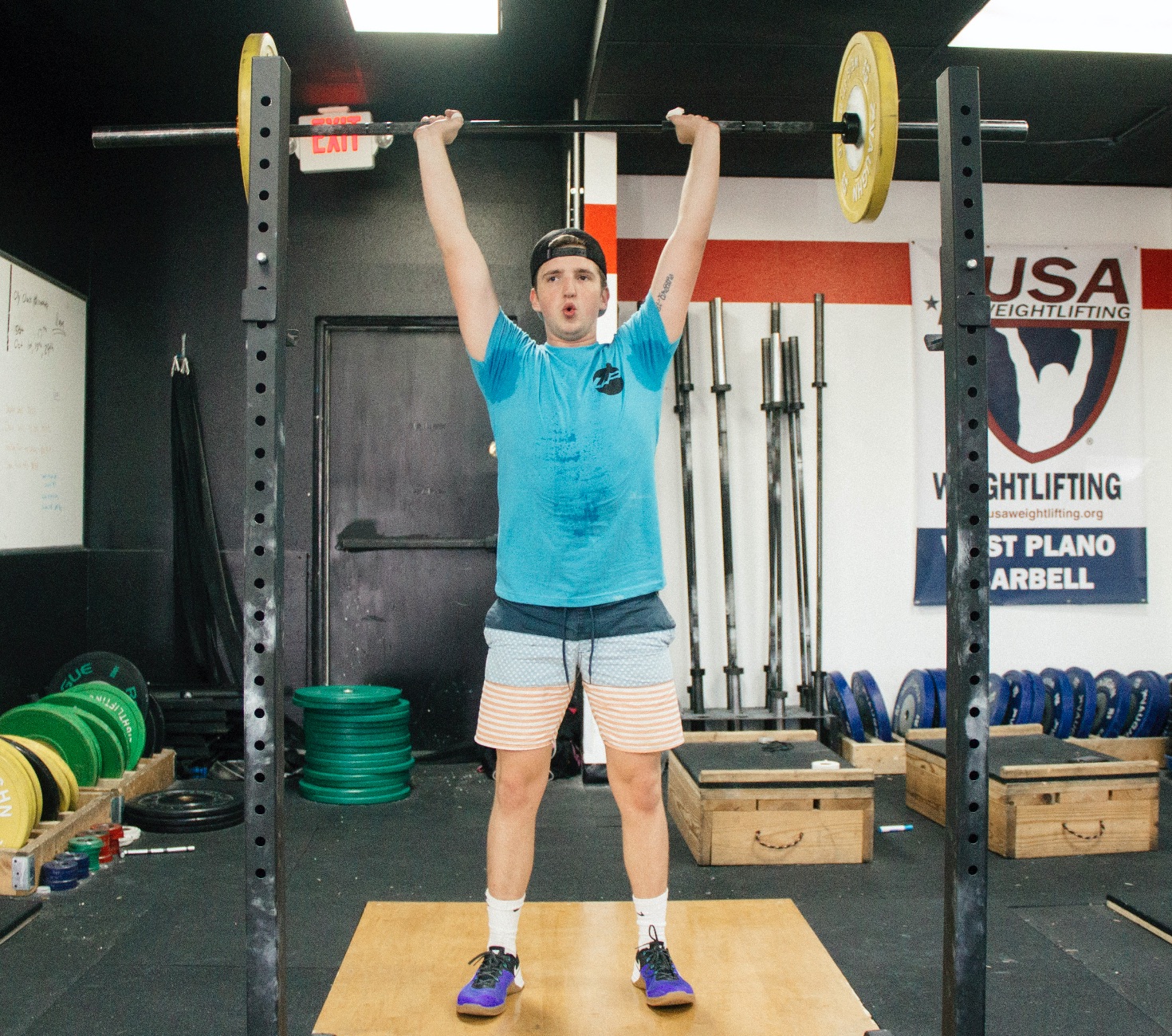
A new lease on life: Brandon is very optimistic about a future that now includes making it out of his 30s.
And the experience has shown Justice that he controls his own reality.
“(It) proved to me that despite what I created in my head, the mental blocks that I created in my head ... it didn't matter. I pushed past that and I could go even further.”
To say it's changed his outlook on life might be an understatement. Justice, a computer-science major, is now looking forward to graduating from college and one day having a family-things he previously deemed unattainable or pointless to pursue.
“I'm just grateful. I'd be grateful if it had pushed me to 50. Knowing that I have that much extra time, it really puts things in perspective as far as my life is concerned.”
About the Author: Andréa Maria Cecil is assistant man- aging editor and head writer of the CrossFit Journal.
Photo credit: Chelsea Donner
The National Women's Soccer League (NWSL) has a pay cap of just $37,800 per player. That's compared to an average of more than $300,000 for men's Major League Soccer. Furthermore, NWSL has a salary ceiling of just $265,000 for each team - compared to more than $3 million for the men.
